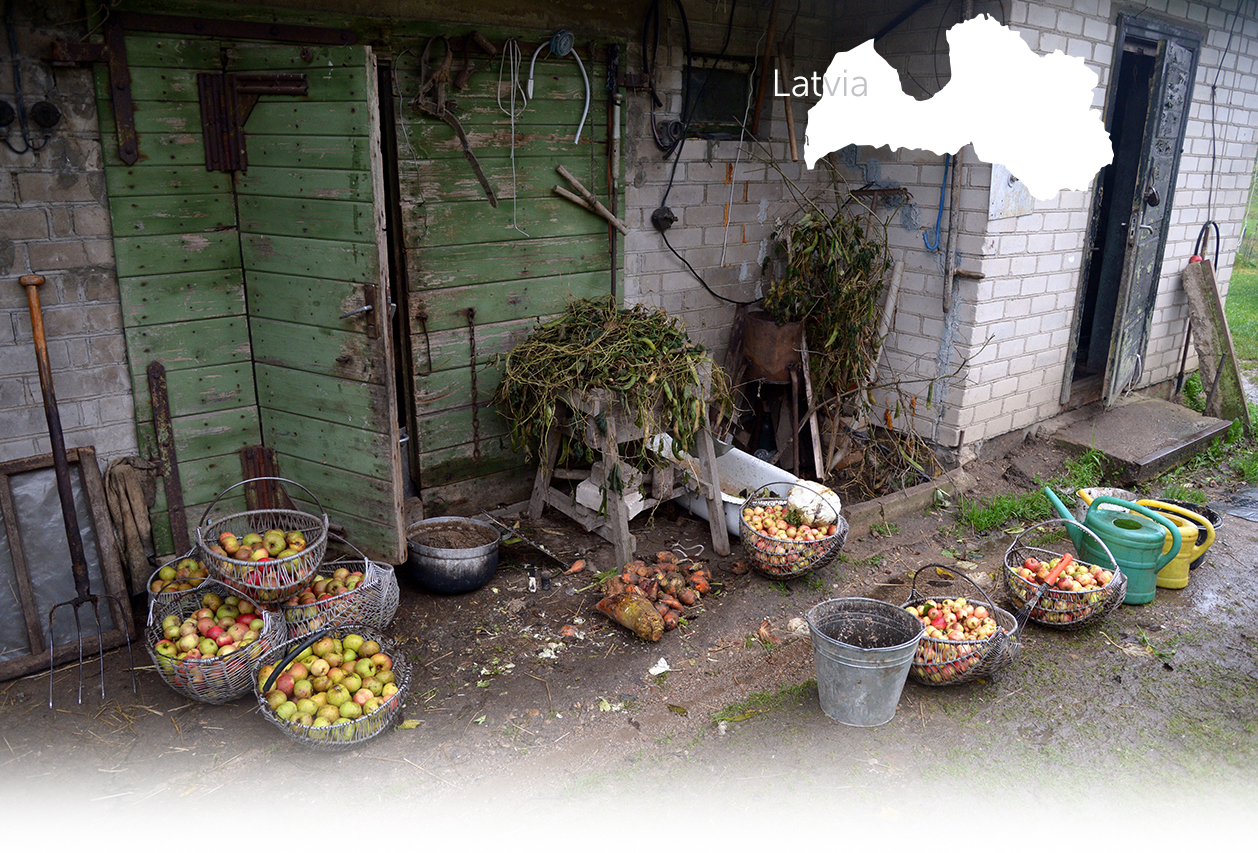

2 Killing site(s)
Janina L., born in 1935: “I saw column of Jews passing by. There were women, men and children, entire families.
The column was escorted by German officers. All these people were taken to the Daugavpils, where a ghetto had been created. There were not only Jews from Kraslava, but also from Viski, Dagda and other towns and villages. I don’t know what happened to them, but they were most probably shot like the of Jews that was shot here. I can’t tell you why some were taken to Daugavpils while others were shot here. I didn’t see the shooting myself, but I know where the execution site is located. They were shot in the woods located behind my house. We could hear the gunshots very clearly. According to other locals, the shooting was conducted by Aizsargi [Latvian volunteer paramilitary organization] and not by the Germans.” (Witness n°16, interviewed in Krāslava, on May 1st, 2019)
"According to witnesses, when the German-Fascist occupiers arrived, 1,884 inhabitants of the city were killed. Among the victims, 154 people were killed in the town of Kraslava itself and the rest on the road to Dvinsk, and in Dvinsk itself. In June 1944, in order to erase the traces of their crime was given and the Germans started to burn the bodies. For this purpose, the Germans brought in around 40 prisoners to the cemetery in chains and forced them to exhume the bodies. The place was fenced off with a tarpaulin and guards were posted around it. The bodies were sprayed with a flammable liquid and burned.” [Act of the Soviet State Extraordinary Commission (ChGK) drawn up in October 1944; GARF 7021-93-11, pp.699-700]
Krāslava is a town located 40km (25mi) east of Daugavpils. The first record of the Jewish community goes back to the mid 18th century when a small number of Jewish families was invited by Count Konstanty Ludwik Plater to move to Krāslava as part of the town development project. The community grew rapidly and by 1766, 840 Jews lived in Krāslava. From 1772 to 1917, Krāslava belonged to the Russian Empire as part of the Latgale district. In second half of the nineteenth century, the Jewish population increased further. In 1847 there were 1483 Jews and by 1897, 4051, making up the half the town’s population. The Jews lived mostly in the center of Kraslava and along the main street, with Poles, Russians and Latvians living on the outskirts. The majority of Jews lived off small scale trade or handcraft. Many Jews also worked in the tanning, flax and weaving industries. Kraslava was well known for the quality of its Matzot. The community had two synagogues, one that followed Litvak traditions and another one for Hassidic Jews. At the beginning of the 20th century, Zionist organizations were also active, as well as the Bund. Once independent from Russian rule, the town remained in a social, demographic and economic crisis. However, the economic situation improved during the 1930s, not without the help of JOINT. As a result of the Molotov-Ribbentrop Pact, the Red Army occupied Latvia in June 1940. Under the Soviet rule, commercial enterprises were nationalized, officials of the previous regime lost their positions, the educational curriculum adjusted itself to the Soviet system and religious education was prohibited. All the youth and community organizations were banned. Jews and non-Jews who opposed the regime were deported to Siberia.
Krāslava was occupied on July 14, 1941, after being bombed. Several civilians, including Jews, were killed during the bombardment. Before the Germans arrived, some Jews managed to cross the border to go to Russia together with some refugees who came from Lithuania and western Latvia. Straight after the German occupation, a local auxiliary police was created and a new mayor was appointed. The isolated shootings of the Jews started immediately and were mostly conducted by the local police. Within the first week following the German entry into the town, it was announced on posters around the town that all the Jews were to present themselves on July 28, 1941, near the synagogues to be deportated. They were allowed to take their belongings with them. After one night spent in the synagogues, all the Jews were marched to Daugavpils where a ghetto had been established. On the way those who were not able to walk were shot dead on the spot. After this deportation, only limited number of artisans and their families, thirty families according to some sources, stayed in Krāslava. The old and the weak were also taken to the Daugavpils Ghetto and executed on 17 August, 1941. A few artisans stayed, mostly tanners and blacksmiths, with their families together with some twenty rich Jews who paid the authorities for the right to remain in Krāslava on condition that they worked to provide basic essential services. On August 27, 1941, these last few Jews were shot in the Augustovka Forest to the west of the town. According to an eyewitness of the execution, local Jews were shot in Krāslava alongside e Jews from the passing columns. Oleg Ye., witness n°14, witnessed a shooting of a column brought in from Dagda. It is possible that the number of victims shot in the Augustovka forest is higher than mentioned in the archival sources. According to him, the shooting was conducted by the Latvian police in the presence of two Germans, a driver and an officer who was taking pictures during the shooting. Later, in order to hide the traces of their crimes, the Germans opened the pit and burned the remains, part of Operation 1005.
Do you have additional information regarding a village that you would like to share with Yahad ?
Please contact us at contact@yahadinunum.org
or by calling Yahad – In Unum at +33 (0) 1 53 20 13 17